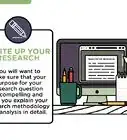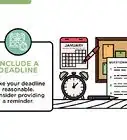This article was co-authored by Christopher Taylor, PhD. Christopher Taylor is an Adjunct Assistant Professor of English at Austin Community College in Texas. He received his PhD in English Literature and Medieval Studies from the University of Texas at Austin in 2014.
There are 10 references cited in this article, which can be found at the bottom of the page.
This article has been viewed 69,232 times.
Qualitative research is exploratory research that aims to understand a certain problem, occurrence, or phenomena by collecting and reviewing subjective information and participant observations. In order to accurately and correctly interpret the information, researchers must strive to study the data with limited bias or outside influence. Because the data is subjective and particular to a given situation or person, it can be difficult to recognize and correct researcher-induced bias or participant bias. If you learn how to recognize and limit both participant and researcher bias, you can produce accurate and impartial data, hypotheses, and conclusions.
Steps
Preventing Bias Throughout Your Research
-
1Review your institution's or sponsor's guidelines for conducting research. If your research is being funded by a university, a business, or another sponsor, be sure to familiarize yourself with the terms and conditions of the research agreement. Some institutions may require that the results be shared with the institution. Many agreements describe commitments to confidentiality and require that researchers disclose any conflicts of interest.[1] Review your agreement with your sponsor to make sure that you are meeting all the guidelines.
-
2Draft your study early in the process. Before you begin to collect your data, write a draft of your study. This will prepare you to focus solely on collecting the data when you enter that phase of research. In addition, it will create an early record of your expectations, which can help you to recognize bias later in the process.Advertisement
-
3Keep detailed records. Every researcher should keep detailed notes and electronic recordings while performing qualitative research. Be sure you are recording the data during the experiment or observation. Waiting to record the data at a later time can introduce errors or misinformation into your data.
-
4Incorporate all data in the report. Include all of your findings and any preliminary data you collected in your report, even if the data did not seem useful. Acknowledge whether you had any expectations and how those were confirmed or contradicted. The reader should be able to see all the data so they can come to their own conclusions or offer constructive feedback. Providing all the data to your reader will help prevent you from misrepresenting the information and from introducing bias into the study.
-
5Acknowledge the limitations. Be sure to include a section that describes your study limitations within your report or paper. In this section, be candid about any issues that affected the study or if there are any questions that require further research. This will demonstrate to your reader that you have thought about your research critically and honestly.[2]
- If you have conducted an opinion poll, for example, and you realized that some of your questions may have prompted a respondent to answer a certain way, acknowledge that in this section. “The survey questions included a statement that may have indicated to the participant that our research was being sponsored by the school. This statement was listed toward the end, and most likely only influenced the two remaining questions.”
Limiting Participant Bias
-
1Ask indirect questions to limit bias. If your research methods include interviewing participants, it is important to acknowledge that the participant's own answers may be inaccurate. People often structure responses that will make them seem more likable, and they may be less inclined to give a truthful answer on controversial topics. Combat this by asking indirect questions and asking them to think about what a third party would do in a particular situation.[3]
- If you are interviewing a coworker or a colleague, avoid asking directly if they are unhappy in their current job. Reframe the question so that it is not as direct. “What do most of your coworkers think about the management in your office?”[4] This indirect question about a third party can foster a honest response from the participant.
-
2Craft open-ended questions. Asking participants open-ended questions will allow you to gain a better understanding of the scope of your research topic. These types of questions allow additional information to flow freely, which may reveal emotional responses and attitudes toward the topic that you may not have considered before. Include these types of questions in your survey, questionnaire, or interview to collect more meaningful data.
- Don't ask a participant a close-ended question that they can answer simply. Instead of asking someone who they voted for in the last election, ask them to describe how they felt about each candidate.
- If you are trying to gauge if a new workflow process in your office is helpful, ask employees how the process has influenced their work. “How has this process helped or hindered your workflow?” This question will reveal more than simply asking whether or not they like the new process.
-
3Maintain a neutral stance. Maintain a neutral and impartial stance on everything from the subject matter to the sponsor of the study. If a participant can sense that you or other researchers feel a certain way, they may tailor their answers to conform to your expectations. Or, if a particular company or institution is sponsoring the study, a participant may be influenced by the sponsor's reputation, mission statement, or overall impact in an industry.
- Try to remove any trace of the sponsor from the interview or observation, and do not express your own personal feelings or opinions.[5]
- Do not add your company's logo or your school's seal on materials provided to the participants.
- If a person is being polled on how they feel about the efficiency of a particular school, for example, they may provide a biased answer if they suspect or know if that institution is performing the research. If you are collecting opinions regarding the admissions process from current students, do not let the participants know if you work in the admissions office or sit on the admissions committee.
-
4Avoid implying that there is a right answer. Acquiescence bias describes someone's inclination to be positive and agreeable to avoid conflict. It is also an easier response since it takes less effort to agree and move on than to provide thorough, truthful feedback. To prompt meaningful responses, avoid developing questions that ask someone to agree or disagree, and remove any yes or no and true or false questions from an interview or a survey.[6]
- Instead of asking a respondent to agree or disagree in a customer satisfaction survey, ask item-specific questions.[7] Form a more direct question instead of asking a participant to respond to the statement, “My experience in the store was satisfactory. Agree or disagree.” Ask a participant, “How was your overall shopping experience at this store? Excellent, good, fair, or bad.”
- Additionally, it's a good idea to allow the respondent to review their answers before submitting their response, as this allows them to confirm their answers accurately reflect their views.
Reducing Researcher Bias
-
1Be aware of confirmation bias. Confirmation bias occurs when a researcher interprets evidence or data in such a way that supports their hypothesis or expectations. It is important to be aware of this form of bias to ensure that it does not influence your research, methods, or conclusion. Confirmation bias can influence a wide range of academic research and everyday situations from medical studies to elections to judiciary proceedings.[8]
- During an election, supporters of a particular candidate may only seek out news sources that showcase their chosen candidate in a positive light. This is confirmation bias. This can affect how you perceive a candidate and can influence your decisions.[9]
-
2Consider every response. While you are conducting your research, you will collect a lot of data, and some may not seem helpful at the time. Regardless, all data should be collated throughout the collection process and evaluated equally. Only collecting data that is perceived as meaningful will skew your interpretations and conclusions. In addition, you might miss out on meaningful patterns or themes that could inform your conclusion.[10]
-
3Collate and sort the data. Once you have collected your data, it should be organized and recorded. Transcribe interviews into a word processing system, record numerical data or survey questions onto a spreadsheet, or enter data into an online database or program. Organize information into various categories to make it easier to sort and study fairly.
- Sort data into categories that make sense for your project. List it by observation type, by date, by location, or by participant background information.[11]
- As you sort or code your data, ask someone to help you or to review your work. It's likely that you will need to interpret ambiguous answers, which allows room for bias. Having multiple researchers interpreting the data will limit the risk of bias influencing your results.
-
4Ask an outsider to review your work at various stages during the study. A fellow researcher, mentor, or colleague who is not familiar with the study can read through your report objectively and find signs of bias that you may not have noticed. Some level of bias can present itself in all levels of research, and the study authors may not be able to recognize it.[12]
- Before collecting data, ask a colleague to review your methods section to look for questions or approaches that may lead to biased data.
- When you have written your final report, ask another mentor or researcher to review the results and the conclusions to look for signs of bias.
Community Q&A
-
QuestionI've heard that awareness of bias creates more bias. Is this true?
 Community AnswerNo. Once you learn how to differentiate between the types of bias, you can control them.
Community AnswerNo. Once you learn how to differentiate between the types of bias, you can control them. -
QuestionHow can I give a reader confidence my research measures and interpretations of qualitative data is free of research biases and assumptions?
 Community AnswerYou could do that by stating the likely biases and steps taken to avoid them. Make sure the possible biases are clearly elaborated on and the measures put in place to alleviate them.
Community AnswerYou could do that by stating the likely biases and steps taken to avoid them. Make sure the possible biases are clearly elaborated on and the measures put in place to alleviate them. -
QuestionWhy is only one woman pictured as a researcher? That rather ironic in a discussion of bias.
 Community AnswerThis is an excellent point. Thank you for raising the issue. It appears that bias affects illustrators and researchers alike.
Community AnswerThis is an excellent point. Thank you for raising the issue. It appears that bias affects illustrators and researchers alike.
References
- ↑ http://www.provost.pitt.edu/documents/GUIDELINES%20FOR%20ETHICAL%20PRACTICES%20IN%20RESEARCH-FINALrevised2-March%202011.pdf
- ↑ http://libguides.usc.edu/writingguide/limitations
- ↑ https://www.quirks.com/articles/9-types-of-research-bias-and-how-to-avoid-them
- ↑ http://sociology.fas.harvard.edu/files/sociology/files/interview_strategies.pdf
- ↑ https://www.quirks.com/articles/9-types-of-research-bias-and-how-to-avoid-them
- ↑ https://www.qualtrics.com/blog/avoiding-the-yes-bias/
- ↑ https://www.qualtrics.com/blog/avoiding-the-yes-bias/
- ↑ http://psy2.ucsd.edu/~mckenzie/nickersonConfirmationBias.pdf
- ↑ https://www.verywell.com/what-is-a-confirmation-bias-2795024















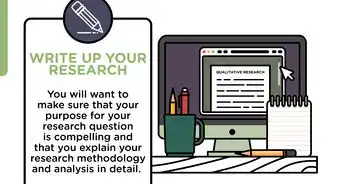
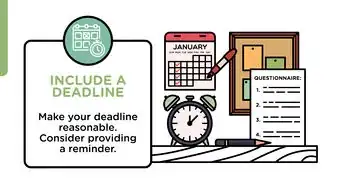
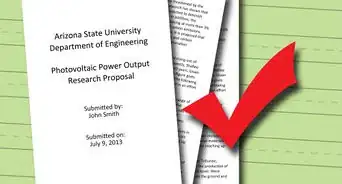
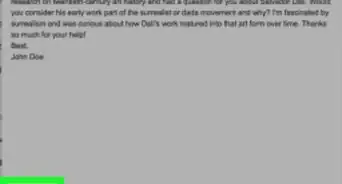
-Step-17.webp)

















